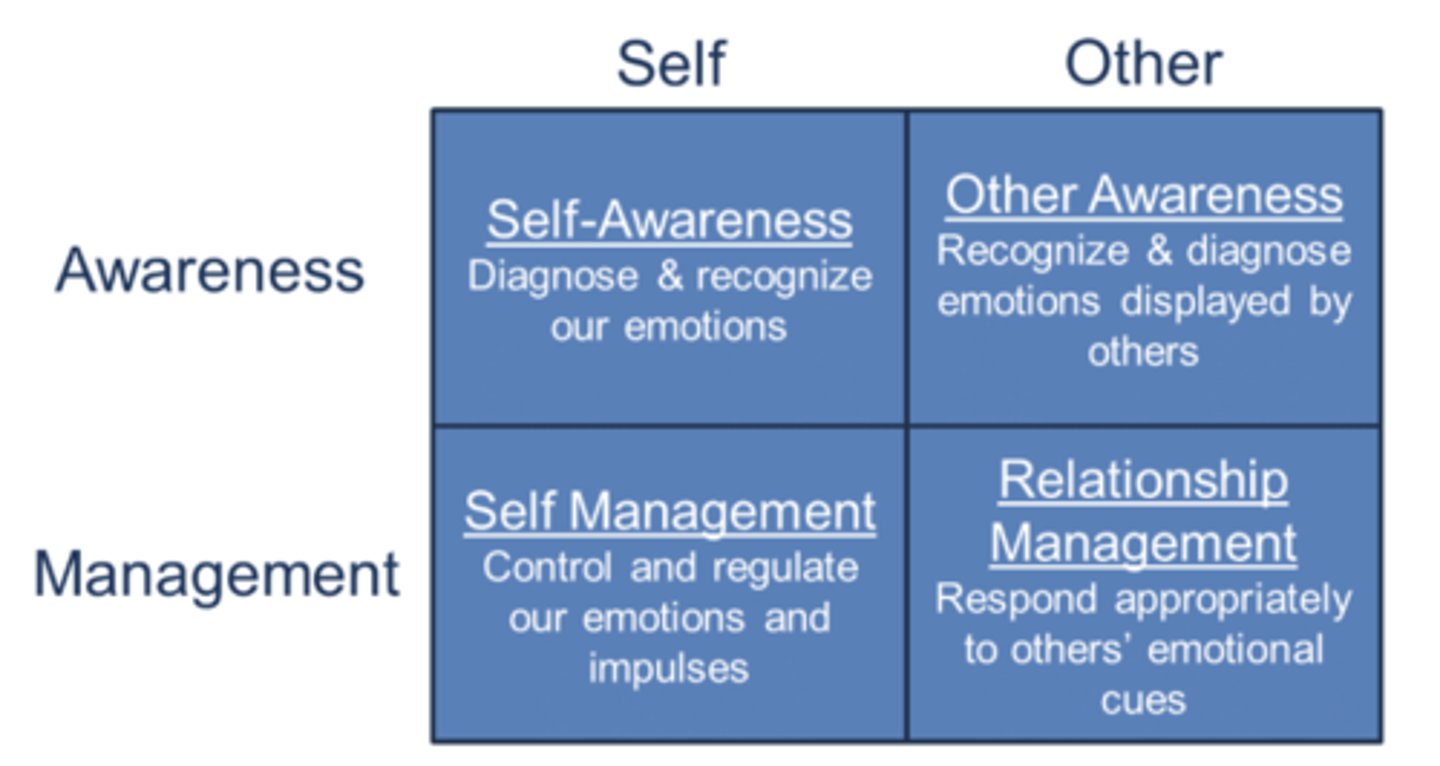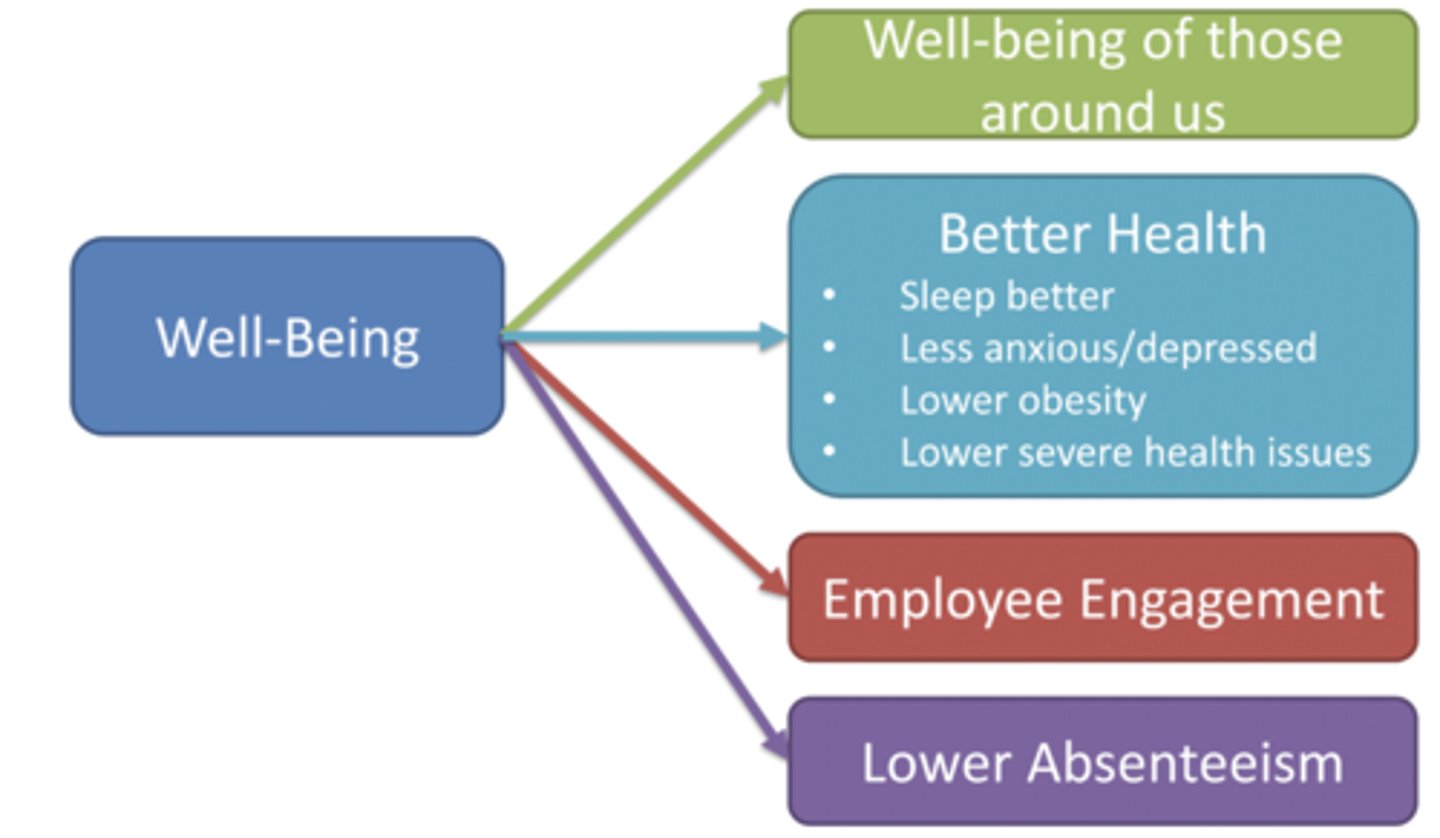CSUF MGMT 443 Exam 1
1/82
There's no tags or description
Looks like no tags are added yet.
Name | Mastery | Learn | Test | Matching | Spaced |
|---|
No study sessions yet.
83 Terms
leadership
use of power and influence to direct the activities of followers toward goal achievement
management
art of getting things done through and with people in formally organized groups. This often implies a position with supervisory responsibility and administration (planning, organizing, directing, &controlling)
inertia
tendency to do nothing or remain unchanged
power
potential to influence other people's behavior
sources of personal power
expertise, interpersonal attraction, effort, legitimacy
influence
securing the consent of others to work with you in accomplishing an objective
power and influence help gain the trust of others to be able to positively influence their beliefs and behaviors to accomplish an objective
true
organizational power
legitimate, reward, coercive
legitimate power
derives from a position of authority
reward power
control over resources or rewards
coercive
control over punishment
expert power
derives from a person's expertise, skill, or knowledge on which others depend
referent power
exists when others have a desire to identify and be associated with a person
attraction
degree to which one has charisma and is agreeable to others
effort
degree to which one is dependable, willing to help, and contribute
alignment
degree to which one's actions are congruent with the prevailing value system of the organization
personal power is more effective in leading people
true
trait approach
personality traits -> behavior
situation trait approach
situation -> personality traits -> behavior
organizational power is commonly used
true
vertical development
elevating a person's mental state & maturity (being better)
horizontal development
adding more knowledge & skills (doing more)
what form of development is best for elevating our personal power (becoming someone others want to follow)?
vertical development
our internal operating system processes and encodes the world around us (most foundational aspect)
true
64% of adults operate at level 1
true
1% of adults operate at level 3
true
85% of execs operate at level 2
true
good soldiers need safety, comfort, and belonging
fear being exposed, discomfort, and not fitting in
progress makers need to advance, stand out, and be seen of value
fear being obsolete, failing or falling short, and not being seen of value
value creators need to be of value, contribute, and elevate others
fear not being of value, taking from things, and limiting others
self awareness
our capacity to stand apart from ourselves and examine our thinking, motives, actions, and habits (and how they may impact others)
mindset
lenses that selectively organize and encode information, thereby orienting an individual toward a unique way of understanding an experience and guiding one toward corresponding actions
self protective mindsets are fixed, closed, prevention, and inward
true
value creating mindsets are growth, open, promotion, and outward
true
fixed
see ourselves and others as being unable to change talents, abilities, & intelligence (look good)
growth
see ourselves and others as being able to change talents, abilities, & intelligence (learn & perform)
what mindset relates to believing what you know is best?
closed
left side of mindset continuum
self-protective
right side of mindset continuum
value creating
what mindset relates to having a clear destination and purpose for getting there?
promotion
which mindset leads to lowest safety incident rates?
prevention
closed
closed to ideas and suggestions of others (being right)
open
willing to give thought to ideas and suggestions from others (finding truth)
which mindset is most important for developing psychological safety?
open
prevention
focus on not losing (avoiding problems)
promotion
focus on winning & gains (reach goals/make progress)
inward
view others as objects (get ahead)
outward
views others as people and values them (lift others)
cultivating a growth mindset could be the single most important thing you ever do to help you achieve success
true
what are our mindsets at a neurological level?
neural connections
emotional intelligence
ability to recognize and control our emotions and recognize and respond appropriately to others emotions

the four quadrants of the ei model is self-awareness, other awareness, self-management, and relationship management
true
what form of development is most effective at developing emotional intelligence?
vertical development
default mode network
activates when not performing a task, daydreaming, mind-wandering
salience network
switching between the default mode network and central executive network
central executive network
engages your conscious brain to think and maintains attention on a prioritized task
the impact of trauma adapts hyper vigilance and dissociation
true
hyper vigilance
we struggle to regulate and control our emotions, prioritize overly sensitive emotions
dissociation
we struggle to connect with and be aware of our emotions, reduced skills for recognizing and navigating others emotions
trauma causes our internal operating system to become wired for self-protection
true
to develop greater emotional intelligence, we need to heal our body's nervous system
true
stress
state of mental or emotional strain/tension
hindrance stressors
hinder progress toward personal accomplishments
challenge stressors
opportunities for learning, growth, and achievement
time stressors
work overload, lack of control
encounter stressors
interpersonal interactions; conflict, lack of trust
situational stressors
from environment, unfavorable working conditions;
long hours, high pressure, change
anticipatory stressors
disagreeable events that threaten to occur; fear, anxiety
well-being
the degree to which one's condition is positive

the five well-being dimensions are purpose, social, financial, community and physical
true
purpose
liking what you do each day and being motivated to achieve your goals
social
having supportive relationships and love in your life
financial
managing your economic life to reduce stress and increase security
community
liking where you live, feeling safe, and having pride in your community
physical
having good health and enough energy to get things done daily
enactive strategies
create or enact a new environment that does not contain stressors
proactive stressors
enhance overall capacity to handle stress by increasing personal resiliency and well-being
reactive strategies
on-the-spot remedies to temporarily reduce the effects of stress
knowledge
facts and lessons learned
skills
use of knowledge to do something
talents
any recurring pattern of thought, feeling, or behavior that can be productively applied
managing weakness
get better at it, design a support system, find a partner, stop doing it, use a strong theme to overwhelm the weakness
weakness
anything that gets in the way of excellent performance, not just an area that lacks proficiency